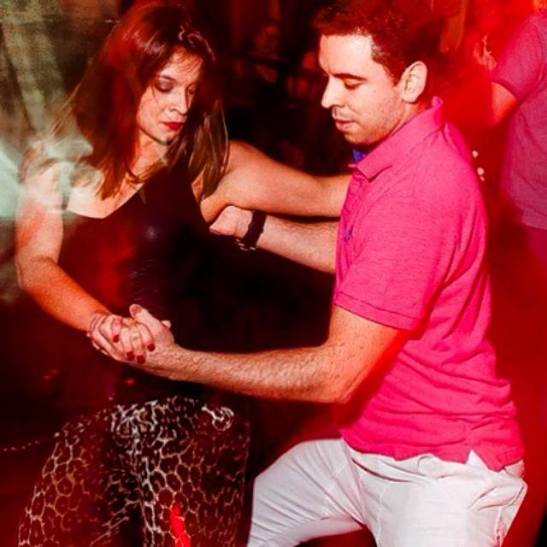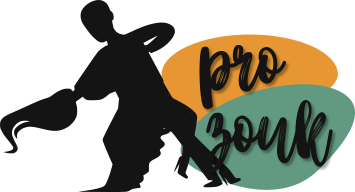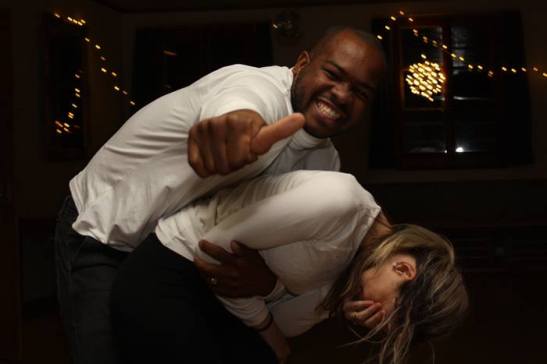Back to Basics
Author: Jukka Välimaa
Source: https://zouksidedown.wordpress.com/2014/04/20/zouk-back-to-basics/
I love beginner lessons. Many people find my attitude perplexing. After all, I’ve been dancing and practicing Zouk for some years now. During that time, in addition to more advanced lessons, I’ve been going to beginner lessons regularly, as well as beginner level workshops in various events. Surely I already know the basics?
By asking the wrong question we only get useless answers. For the purpose of improving our dancing, the yes-or-no “Do I know the basics?” is the wrong question. The basics are not something we either know or not; they’re something we can keep improving without ever really stopping.
Brazilian Zouk has many basic movements, such as the basic step, lateral, viradinha, simple turn, preparation, bonus and inverted bonus. They are basic in the sense that they are taught to beginners, and also in the sense that they are relatively (and deceptively) simple.
They are also basic in the sense that they are fundamental. This means that they are the foundation on which the whole of your dance rests. If your basics are good, it makes the whole of your dance look and feel better, no matter how many advanced movements you do. If your basics suck, your dance will also suck no matter how many fancy new combinations you learn.
Why do basics make such a difference? You will keep using them in your dance as you develop; they are not left behind just because more complicated figures are learned. Rather, they are the links used to connect moves to each other, and the base on which to build variations. They cover a lot of technique that is needed in more advanced moves also. If timing, for example, doesn’t work well with basic moves, it’ll work even worse with more complicated ones.
The basic step was the very first thing I learned when I started dancing Zouk, yet I still use it a lot. It’s my favorite movement, with endless potential for connection, variation and musicality. I never go through a dance without using it. Considering all this, making my basic step better is something I’m very interested in. If I’d get the choice of making a very small improvement in my basic step, or learning a new figure I might use occasionally? I’d pick the first option, no hesitation. The gain is much greater.
When beginners look at professionals or advanced dancers dancing, they’re often struck by how little resemblance what they’re seeing has to the moves they learned at their first lessons. This is understandable, as there are many variations of the basic movements and they are often taught in somewhat simplified, stripped-down forms to begin with. Also, there is no one perfect way to do the basic moves. The goal is not that everyone’s basics look the same; there is a lot of leeway for a dancer to add their own style while keeping good form.
No matter the dance, basics tend to be under-appreciated, but I think in the European Zouk scene especially so. Last year, I and two friends of mine took some private lessons from Renata and Jorge, asking them to work on our basics. Afterwards we learned that Renata had praised us for this to our teachers, Freddy and Andressa.

Freddy and Andressa make a point of teaching their students about the importance of having good basics
Apparently, we were basically the only ones asking for work on basics, of all the people taking private lessons from her during her tour. Even later, a Brazilian student of hers told us she’d mentioned it to them also. It’s a bad sign that we’d get special mentions for something as unremarkable as asking for work on basics.
Now, why are the basics so often under-appreciated? I think there are many reasons for this. First of all, it requires skill to appreciate the limits of your skill. The more you know, the better you understand where your knowledge and skills could use improvement. Someone who hasn’t worked to improve his basics may not understand how much better he could get by improving them. I’ve met followers who have been dancing for years and they were making elementary mistakes in their lateral without realizing it. Correcting these mistakes would have made them much lighter to lead and more graceful to look at.
Second, without the right attitude, working on basic technique is not as mentally rewarding as learning new movements. It involves examining your own dance carefully, seeking out various minor details to improve, and then doing the hard work to change the old habits. This is not something as concrete and superficially rewarding as learning a new move. Working on basics and technique will not immediately add a flashy new move to your repertoire. Rather, it will gradually make your dance feel and look better.
Third reason may be status-related. Some people associate beginner lessons and studying the basics with being a beginner. Advanced dancers are supposed to know them already, right? My own experience is different. I have noticed that as I develop, I find new aspects and new things to improve in basic movements. Constant work on basics is a sign of a dedicated dancer who is going to keep improving. Leonardo Neves took beginner lessons for eight years, and I’m sure this is one of the reasons so many women praise him so much.
Fourth reason is that some teachers may be setting a bad example. They may focus too much on combinations, not teach about the importance of basics, or simply not teach the basics in a right way. As said in this very good article about martial arts that also applies to dancing, the student may not understand that there is more to the basics than kindergarten-level introduction if the teacher does not deliver the message properly.
I fear not the man who has practiced 10 000 kicks once,
but I fear the man who has practiced one kick 10 000 times.
-Bruce Lee
To paraphrase the Bruce Lee quote above, I admire not the dancer who has practiced 10 000 moves once, but I admire the dancer who has practiced the basic step for 10 000 times. I’m not saying we should limit our dancing to the basic step only. I’m saying that quality of moves beats quantity of moves. The old saying of quantity having a quality of its own does not apply to dancing. And when it comes to quality, the basics are the place to start, and keep returning to.
Guest Post written by Jukka Välimaa, Zouk Nerd from Helsinki, Finland.
|
2
4054 |





 English
English


Удалить комментарий?